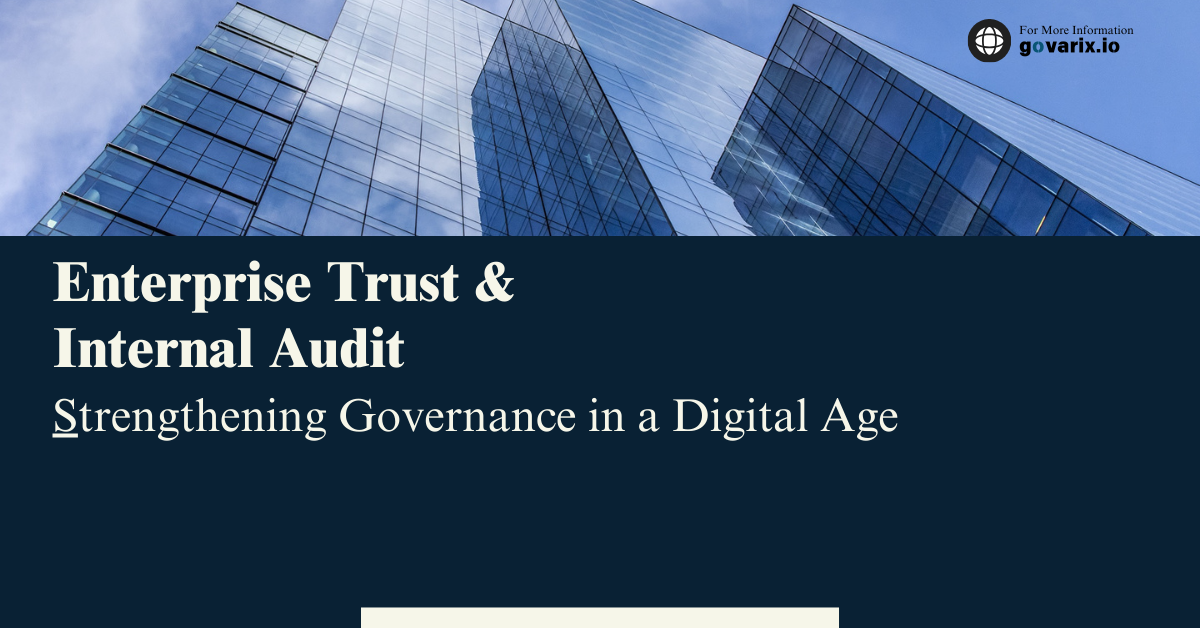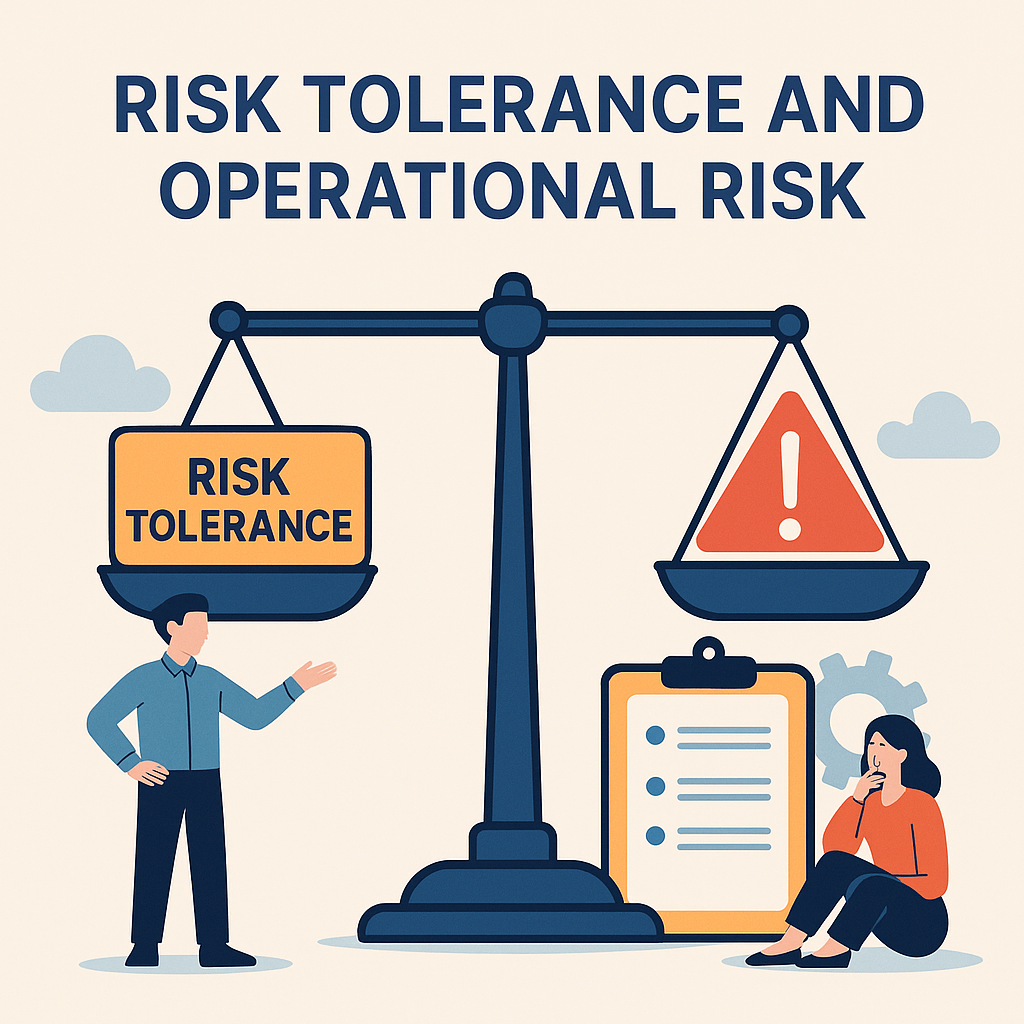Introduction
In today’s digital age, trust is a critical asset for organizations. Enterprises must ensure that their governance frameworks, risk management strategies, and compliance mechanisms align with evolving stakeholder expectations. Internal audit plays a vital role in reinforcing enterprise trust by enhancing transparency, accountability, and security across business operations.
This short conceptual blog explores how internal audit can strengthen enterprise trust by leveraging modern governance practices, digital tools, and proactive risk management strategies.
The Importance of Trust in Business
Enterprise trust is built on a foundation of integrity, transparency, and ethical governance. Organizations that prioritize trust benefit from:
- Stronger stakeholder confidence: Investors, customers, and employees have greater faith in the business.
- Regulatory compliance assurance: Avoiding legal and financial risks by adhering to compliance requirements.
- Operational resilience: A culture of trust fosters collaboration and minimizes risk exposure.
- Competitive advantage: Trusted organizations attract and retain more customers and partners.
Example: A global e-commerce company implemented automated compliance monitoring to ensure regulatory adherence in multiple jurisdictions, improving consumer trust and reducing compliance violations.
How Internal Audit Strengthens Enterprise Trust?
Now let us run through the key pointers on how internal audit team can strengthen enterprise trust.
1. Enhancing Governance & Compliance Frameworks
Internal auditors assess corporate governance structures to identify gaps, inefficiencies, and risks. Strengthening policies ensures better oversight, ethical decision-making, and long-term sustainability.
Example: A multinational banking institution revamped its governance framework by incorporating real-time compliance dashboards, allowing leadership to track and mitigate regulatory risks effectively.
2. Leveraging Data Analytics for Risk Transparency
Advanced analytics provide real-time risk visibility, allowing auditors to proactively identify fraud, financial discrepancies, and operational inefficiencies.
Example: An insurance firm used predictive analytics to detect fraudulent claims patterns, saving millions in potential losses and strengthening policyholder trust.
3. Cybersecurity and Digital Trust
With increasing cyber threats, organizations must prioritize cyber risk assessments, data protection, and IT governance to maintain enterprise trust.
Example: A healthcare provider implemented AI-driven cybersecurity audits, reducing the risk of patient data breaches and ensuring compliance with health data privacy regulations.
4. Strengthening Third-Party Risk Management
As businesses rely more on third-party vendors, internal audit ensures that partners adhere to security, ethical, and operational compliance standards.
Example: A logistics company integrated supplier risk assessments within its audit framework, reducing vendor-related disruptions and improving supply chain integrity.
5. ESG and Ethical Business Practices
Environmental, Social, and Governance (ESG) auditing is essential for businesses that aim to enhance trust while meeting regulatory and societal expectations.
Example: A retail brand conducted sustainability audits to evaluate carbon emissions across its supply chain, leading to improved ESG compliance and customer loyalty.
Overcoming Challenges in Strengthening Enterprise Trust
Common Challenges:
- Rapid regulatory changes requiring constant governance updates.
- Digital transformation risks, including cybersecurity and data integrity concerns.
- Resistance to transparency within traditional corporate cultures.
- Lack of standardized trust measurement metrics.
Solution:
Organizations must embrace technology-driven auditing, implement continuous monitoring, and promote ethical leadership to mitigate these challenges effectively.
The Future of Enterprise Trust and Internal Audit
As businesses evolve, so must internal audit practices within an organization. Internal auditors should have a learning mentality and develop their skillset with changing need of time. Future trends shaping trust and governance include:
- AI-driven risk assessment: Automating real-time risk monitoring.
- Blockchain for audit transparency: Securing immutable audit trails.
- Proactive compliance monitoring: Reducing compliance risks through automation.
- Trust metrics and reporting: Standardizing enterprise trust measurement for stakeholders.
Example:
A manufacturing company implemented blockchain-based audit trails, ensuring end-to-end transparency in product sourcing and regulatory compliance.
Conclusion
Enterprise trust is a cornerstone of sustainable business success. Internal audit plays a crucial role in strengthening governance, mitigating risks, and ensuring compliance in an increasingly digital landscape.
By embracing data analytics, cybersecurity frameworks, and ethical governance, organizations can enhance trust among stakeholders, regulators, and customers. Businesses that prioritize transparency and accountability will emerge stronger and more resilient in today’s competitive market.
References
- Deloitte – Enterprise Trust and Governance
- KPMG – Building Trust through Internal Audit
- PwC – Cybersecurity and Enterprise Trust
- The Institute of Internal Auditors (IIA) – Best Practices in Governance Auditing
- Harvard Business Review – The Role of Trust in Business Success








